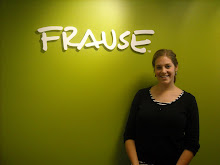 When I started taking classes at the University of Washington, I had the high expectation that college would teach me everything I needed to know to become successful in the working world. I thought I would take a few classes, get a couple A’s under my belt and obtain a real world job with just a snap of my fingers. Little did I know that college was only one small piece needed to complete the large working world puzzle.
When I started taking classes at the University of Washington, I had the high expectation that college would teach me everything I needed to know to become successful in the working world. I thought I would take a few classes, get a couple A’s under my belt and obtain a real world job with just a snap of my fingers. Little did I know that college was only one small piece needed to complete the large working world puzzle.As my college career nears to a close, I have realized that many other experiences, besides receiving a college degree, have helped me get on the right track toward my future career. I am surprised to say that if it was just college alone, I wouldn’t be as prepared for real life as I am today. I love my school and I am leaving it more knowledgeable than when I first came in- thankfully. But I do wish UW could have prepared me a little more in my specific field of study.
Public relations students at UW are at a slight disadvantage in their education because UW cut its PR program a few years back. With only a few PR classes and one PR professor to learn from, understanding the tools, tactics and best practices of the PR trade can be quite challenging.
Luckily, with the help of the Public Relations Student Society of America (PRSSA), and the Public Relations Society of America (PRSA), UW students still have a chance to piece together the job market puzzle. PRSSA and PRSA provide tools and resources to students and help them find internships, meet PR pros and connect with other Washington State PR students. It’s PRSSA members and PRSA pros that have helped me get my hands on some great internships (Frause), in turn giving me a front row seat in the PR world.
Luckily, with the help of the Public Relations Student Society of America (PRSSA), and the Public Relations Society of America (PRSA), UW students still have a chance to piece together the job market puzzle. PRSSA and PRSA provide tools and resources to students and help them find internships, meet PR pros and connect with other Washington State PR students. It’s PRSSA members and PRSA pros that have helped me get my hands on some great internships (Frause), in turn giving me a front row seat in the PR world.
UW gave me a great education, but a big thanks goes out to my fellow PRSSA students for their friendship and support and to PR professionals in Puget Sound PRSA for investing their time and effort into providing me and other PR students with real public relations experience. My experiences with PRSSA and PRSA really opened doors to the job world. Thanks to them I might soon be ready to tackle the working world!
-Amy Graham









